Novel method for probing the specificity binding profile of ligands: applications to HIV protease
- PMID: 18384529
- PMCID: PMC3480184
- DOI: 10.1111/j.1747-0285.2008.00659.x
Novel method for probing the specificity binding profile of ligands: applications to HIV protease
Abstract
A detailed understanding of factors influencing the binding specificity of a ligand to a set of desirable targets and undesirable decoys is a key step in the design of potent and selective therapeutics. We have developed a general method for optimizing binding specificity in ligand-receptor complexes based on the theory of electrostatic charge optimization. This methodology can be used to tune the binding of a ligand to a panel of potential targets and decoys, along the continuum from narrow binding to only one partner to broad binding to the entire panel. Using HIV-1 protease as a model system, we probe specificity in three distinct ways. First, we probe interactions that could make the promiscuous protease inhibitor pepstatin more selective toward HIV-1 protease. Next, we study clinically approved HIV-1 protease inhibitors and probe ways to broaden the binding profiles toward both wild-type HIV-1 protease and drug-resistant mutants. Finally, we study a conformational ensemble of wild-type HIV-1 protease to 'design in' broad specificity to known drugs before resistance mutations arise. The results from this conformational ensemble were similar to those from the drug-resistant ensemble, suggesting the use of a conformational wild-type ensemble as a tool to develop escape-mutant-resistant inhibitors.
Figures
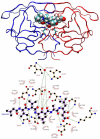
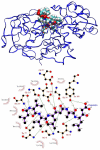
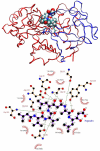
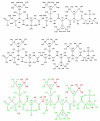
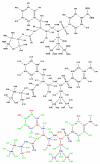
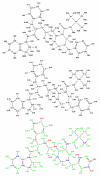
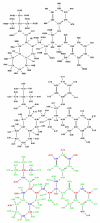
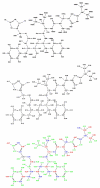
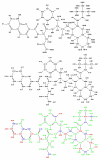
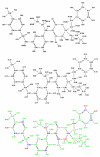

Similar articles
-
Molecular mechanisms and design principles for promiscuous inhibitors to avoid drug resistance: lessons learned from HIV-1 protease inhibition.Proteins. 2015 Feb;83(2):351-72. doi: 10.1002/prot.24730. Proteins. 2015. PMID: 25410041 Free PMC article.
-
Protein promiscuity: drug resistance and native functions--HIV-1 case.J Biomol Struct Dyn. 2005 Jun;22(6):615-24. doi: 10.1080/07391102.2005.10531228. J Biomol Struct Dyn. 2005. PMID: 15842167
-
Resilience to resistance of HIV-1 protease inhibitors: profile of darunavir.AIDS Rev. 2008 Jul-Sep;10(3):131-42. AIDS Rev. 2008. PMID: 18820715 Free PMC article. Review.
-
Substrate envelope-designed potent HIV-1 protease inhibitors to avoid drug resistance.Chem Biol. 2013 Sep 19;20(9):1116-24. doi: 10.1016/j.chembiol.2013.07.014. Epub 2013 Sep 5. Chem Biol. 2013. PMID: 24012370 Free PMC article.
-
Design of HIV protease inhibitors targeting protein backbone: an effective strategy for combating drug resistance.Acc Chem Res. 2008 Jan;41(1):78-86. doi: 10.1021/ar7001232. Epub 2007 Aug 28. Acc Chem Res. 2008. PMID: 17722874 Review.
Cited by
-
A comparative study of HIV-1 and HTLV-I protease structure and dynamics reveals a conserved residue interaction network.J Mol Model. 2011 Oct;17(10):2693-705. doi: 10.1007/s00894-011-0971-1. Epub 2011 Jan 29. J Mol Model. 2011. PMID: 21279524
-
Molecular Basis for Drug Resistance in HIV-1 Protease.Viruses. 2010 Nov;2(11):2509-2535. doi: 10.3390/v2112509. Epub 2010 Nov 12. Viruses. 2010. PMID: 21994628 Free PMC article.
-
Structural basis for drug and substrate specificity exhibited by FIV encoding a chimeric FIV/HIV protease.Acta Crystallogr D Biol Crystallogr. 2011 Jun;67(Pt 6):540-8. doi: 10.1107/S0907444911011681. Epub 2011 May 12. Acta Crystallogr D Biol Crystallogr. 2011. PMID: 21636894 Free PMC article.
-
Prediction of HIV-1 protease/inhibitor affinity using RosettaLigand.Chem Biol Drug Des. 2012 Jun;79(6):888-96. doi: 10.1111/j.1747-0285.2012.01356.x. Epub 2012 Mar 19. Chem Biol Drug Des. 2012. PMID: 22321894 Free PMC article.
-
Herpes B virus gD interaction with its human receptor--an in silico analysis approach.Theor Biol Med Model. 2014 Jun 6;11:27. doi: 10.1186/1742-4682-11-27. Theor Biol Med Model. 2014. PMID: 24902525 Free PMC article.
References
-
- Hartwell LH, Hopfield JJ, Leibler S, Murray AW. From molecular to modular cell biology. Nature. 1999;402(6761 Suppl):C47–C52. - PubMed
-
- Yeh P, Tschumi A, Kishony R. Functional classification of drugs by properties of their pairwise interactions. Nat. Genet. 2006;38:489–494. - PubMed
-
- Sebolt-Leopold J, English J. Mechanisms of drug inhibition of signalling molecules. Nature. 2006;441:457–462. - PubMed
-
- Hanks SK, Quinn AM, Hunter T. The protein kinase family: Conserved features and deduced phylogeny of the catalytic domains. Science. 1988;241:42–52. - PubMed
Publication types
MeSH terms
Substances
Grants and funding
LinkOut - more resources
Full Text Sources

